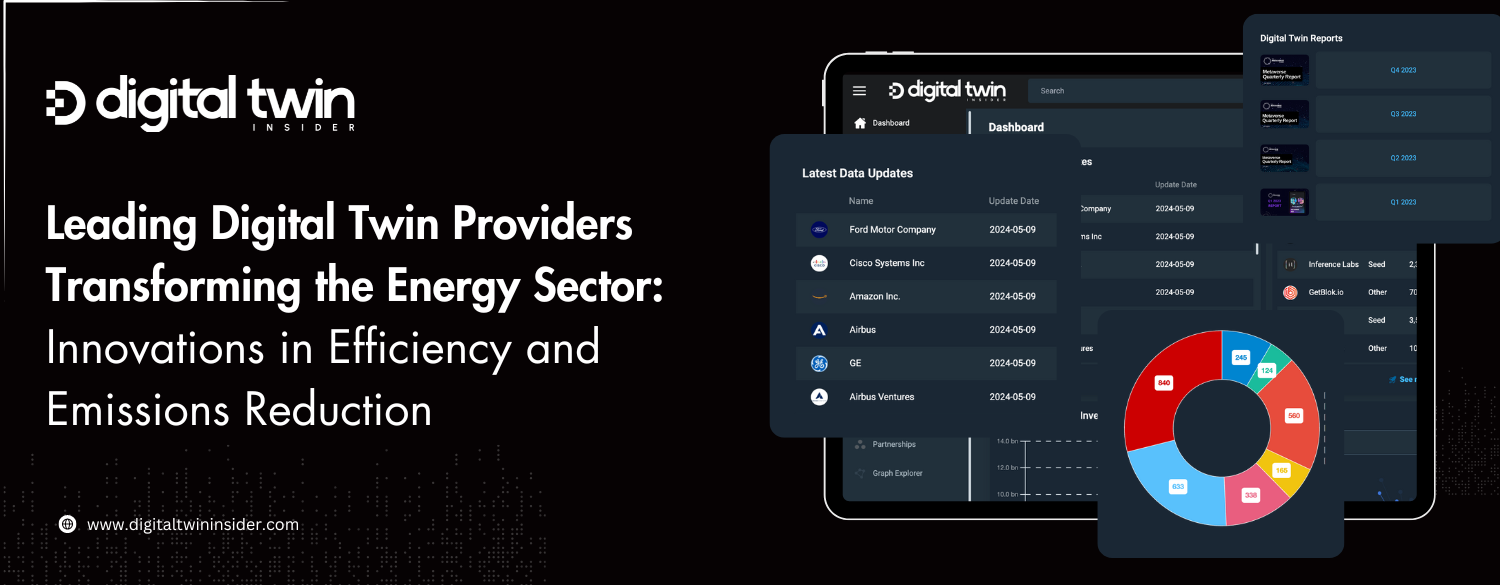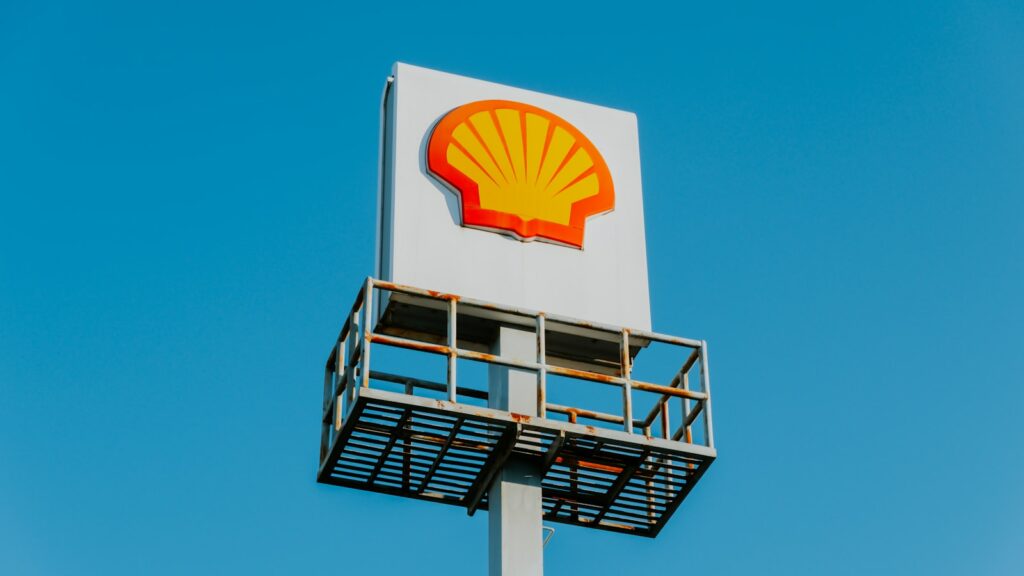The digital twin industry is multifaceted, with providers working with end users to supply digital twin solutions across industries. Digital twin providers work endlessly within the energy sector to build digital twin solutions for customers across fuel sources such as oil, gas, and electricity. This article outlines the top digital twin providers in the energy industry and why digital twins are important.
The Importance of Digital Twins in Energy
Digital Twins are of high importance to the energy sector. According to techUK in their latest whitepaper, digital twins play an important role in improving the efficiency of energy usage and risk management; likewise, digital twins play an integral role in reducing energy emissions through better operational efficiency.
Thus, digital twins not only offer benefits for companies in terms of increased profits and reductions in costs and risks but also improve their carbon footprint. As a result, digital twins have a major role in the energy sector, with far-reaching implications for environmental protection.

BP is an example of an energy company working to reduce emissions using digital twins. BP has deployed its digital twin, APEX, to map oil and gas production in the North Sea. APEX looks to improve its operations in North Sea endeavors through enhanced efficiency and reduced energy emissions. BP has reported that APEX has saved the company 30,000 gallons of oil since its introduction.
Another example of energy companies using digital twins is Tokamak Energy, which is looking to use digital twins to test commercial fusion employing what they call SOPHIA Modelling programs for better functional efficiency. On the wind energy side, companies such as Vattenfall have developed digital twins of their wind turbines to improve efficiency. Vattenfall is just one company developing digital twins in the sustainable energy space.
Top 8 Digital Twin Energy Providers
1. Aramco
Aramco has invested heavily in digital transformation through its Aramco Digital initiative, which integrates AI, cloud computing, and IoT to optimize its operations. They use digital twins to monitor and simulate various aspects of their processes, such as oil well performance, supply chain processes, and environmental impact management. This technology helps them improve efficiency, predict maintenance needs, and enhance facility safety.
Aramco uses digital twins for their manufacturing plants, integrating data from different stages of production to optimize processes and reduce downtime. Their 4IR Center is pivotal in applying these technologies to achieve a more sustainable and efficient operation.
2. BP
BP’s APEX system represents a groundbreaking digital tool in oil and gas production to optimize efficiency and preempt potential issues before they disrupt production. By generating digital twins of BP’s wells and employing integrated asset and physics-based hydraulic models, APEX enhances surveillance and production optimization. Its implementation has notably boosted BP’s global production by 30,000 barrels.
APEX has been deployed worldwide across all of BP’s production systems, with regions like the North Sea leading the way. Offering a safe environment to plan and assess interventions before real-world implementation, APEX promises significant cost savings and operational efficiencies, heralding a transformative shift in the oil and gas industry.
The APEX system is being rolled out globally across BP’s operations, demonstrating its scalability and effectiveness in enhancing production efficiency and safety. This system helps BP quickly simulate operational scenarios to prevent potential issues and optimize production flows.
3. Chevron
Chevron employs digital twin technology to optimize its oilfield operations. Their digital twins are used to create virtual replicas of their physical assets, enabling real-time monitoring and predictive maintenance. This technology helps Chevron to reduce downtime and enhance the performance of its equipment.
Chevron uses digital twins in upstream operations for reservoir management, drilling, and production optimization, allowing for better decision-making and increased efficiency in resource extraction.
4.ExxonMobil
ExxonMobil has integrated digital twin technology into its operations to enhance asset management and operational efficiency. Their digital twins simulate refinery processes, helping to predict equipment failures and optimize production schedules.
ExxonMobil’s digital twins are applied in their refinery and petrochemical plants to improve process optimization and reduce operational risks.
5. Shell
Shell is leveraging digital twin technology in partnership with companies like Kongsberg Digital to enhance decision-making and operational efficiency across its assets. Shell drives improved business outcomes and operational performance by integrating real-time sensor data, historical data, and engineering information.
This initiative has already resulted in significant value gains, with Shell recouping initial investments and reducing operating costs by approximately $3 million at the Nyhamna gas processing plant in Norway. Digital twin technology allows Shell to simulate scenarios, optimize energy use, and enhance production efficiency, maximizing gas and condensate production while minimizing energy consumption.
This strategic use of digital twins positions Shell at the forefront of digitalization in the oil and gas industry, enabling efficiency, remote operations, and collaboration for increased value creation.
Shell uses digital twin technology extensively in their exploration and production activities. They create digital replicas of their offshore platforms and other assets to monitor real-time conditions and predict maintenance needs.
Shell’s digital twins integrate data from various sources to provide a comprehensive view of their operations, from subsurface exploration to production and distribution.
6. TotalEnergies
TotalEnergies employs digital twin technology to enhance the efficiency of their oil and gas operations. They use digital twins to simulate and optimize their drilling and production processes, reducing costs and improving safety.
In addition to traditional oil and gas operations, TotalEnergies uses digital twins for their renewable energy projects, such as wind farms, to optimize performance and maintenance.
7. Eni
Eni leverages digital twin technology to improve the reliability and efficiency of their oil and gas production facilities. Their digital twins help in real-time monitoring, predictive maintenance, and process optimization.
Eni’s digital twin solutions incorporate advanced analytics and AI to enhance decision-making and operational efficiency across their global operations.
8. Schneider Electric
Schneider Electric is developing digital twins for OEMs through its EcoStruxure Machine Expert Twin platform. The platforms enable OEMs to create digital twins of machines before, during, and after production. Integrated with Schneiders Lexium MC12 Multi-Carrier System, the platform has seen notable success, with the company stating that EcoStruxure has achieved a 20% reduction in emissions, a 50% increase in machine performance, and savings on investment costs by 40%.
Schneider Electric also offers digital twin services to energy customers through its EcoConsult Electrical Digital Twin, developing electrical single-line diagrams digitally for clients as a digital twin. EcoConsult has also seen similar success metrics as EcoStruxure for companies like Nestle that use the service.
Conclusion
This article has outlined the leading energy companies currently developing digital twin solutions. As highlighted, the potential for digital twins in the energy market is substantial, with the technology improving the efficiency of organizations for profits and environmental sustainability, reducing emissions in line with net zero targets set by companies. For more information on energy companies’ role in the market, check out our intelligence platform for the latest insights.


















